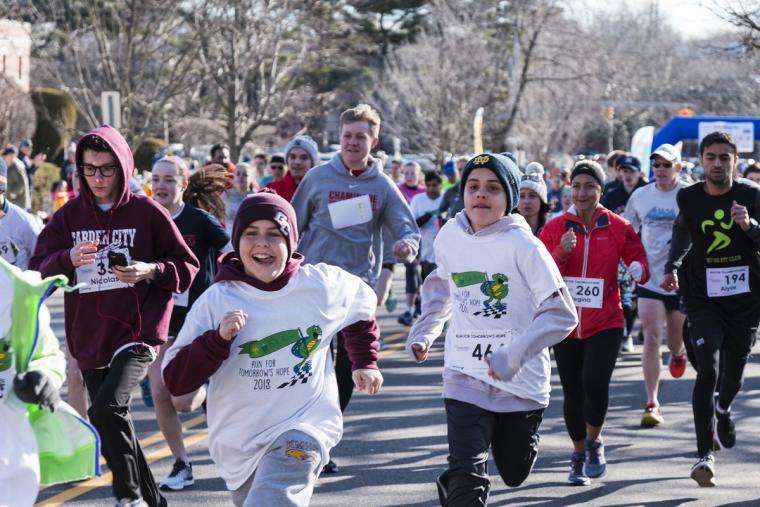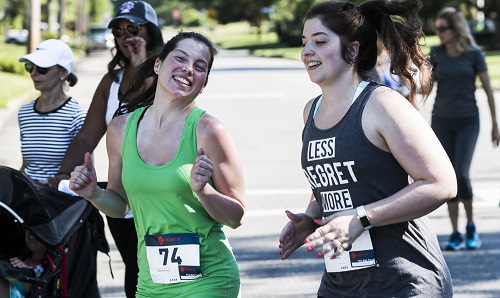E-mail Sarah Lorge Butler/Runner's World/Hearst Magazines, Inc.
About Sarah Lorge Butler/Runner's World/Hearst Magazines, Inc.

Editor’s Note: This article originally appeared in Runner’s World on January 20, 2023 and is reprinted with permission. Find the original article, and related content, at this link.
Over the past three years, the road racing industry bonked. Hard.
In 2020, almost all in-person races after the middle of March were canceled due to the pandemic. In 2021, some races managed a comeback in between COVID variants, but many contended with reduced fields or staggered starts or a different schedule—traditional spring races moved to the fall, for instance.
In 2022, races were open for business as usual—but runners didn’t flock back. Participation was down about 16 percent from pre-pandemic levels, Road Runners Club of America told Runner’s World last September—and many events saw numbers decline much more.
Even the Boston Marathon—traditionally so popular that runners have needed to better their qualifying times by several minutes to gain entry—had no cutoff for two years in a row, for the 2022 and 2023 races. Only a few events, like the Twin Cities and New York City marathons, managed to keep numbers where they were in 2019.
“Gone are the days when you flip a switch on registration and 10 minutes later, your race is full,” said Dave McGillivray, who directs, among other races, the Boston Marathon, Falmouth Road Race, and Beach to Beacon 10K, all of which saw numbers decline in 2022 compared to 2019.
 Several races shut down, saying they couldn’t break even, as inflation caused skyrocketing prices on everything from T shirts and medals to the cost of porta-potty rental and delivery and police overtime. The Mercedes-Benz Marathon in Birmingham, Alabama, for instance, which has run for the past 21 years and hosted the Olympic Marathon Trials in 2004, is holding its last race in February.
Several races shut down, saying they couldn’t break even, as inflation caused skyrocketing prices on everything from T shirts and medals to the cost of porta-potty rental and delivery and police overtime. The Mercedes-Benz Marathon in Birmingham, Alabama, for instance, which has run for the past 21 years and hosted the Olympic Marathon Trials in 2004, is holding its last race in February.
But all is not lost. Race directors said they expect strong numbers for 2023 events, and they’re working on various ways to draw runners back to their races—or to the starting line for the first time. Here are some of the strategies they’re using.
Kids race free. Or bring enough friends—and you race free.
Twin Cities in Motion, the nonprofit that hosts the Twin Cities Marathon and several other events throughout Minneapolis-St. Paul during the year, started in 2022 a “kids race free” initiative for all children, 18 years of age and younger, for all events. Several other race organizations are experimenting with the idea, using different age cutoffs, such as 14 and under or 16 and under. The idea is to convert children and teens to lifelong runners and racers.
The Mohawk Hudson River Marathon takes a different tack, by offering registrants a code: If a runner gets five others to sign up using that personalized code, the original registrant gets their money back.
Bring the babies. And Rover while you’re at it
In 2022, the Atlanta Track Club (ATC) unveiled a new feature for its annual Thanksgiving Day 5K: Kids in strollers and dogs were welcomed. In fact, these two categories got their own starting waves.
“As people return to races or, in many cases, sign up for a road race for the first time, we want to do everything we can to welcome them to the start line,” said ATC spokesman Jay Holder. “We know lots of people run or walk races with their training partners, and we wanted that to be true for people whose training partners are their kids in a jog stroller or their dog.”
Dogs had water bowls along the course, bones at the finish, and bandanas. According to the event’s inadvertently humorous guidelines, stroller pushers were supposed to retrieve anything their toddlers tossed out the side of the carriage, and dog owners, allowed a maximum of two leashed canines per registered runner, naturally were supposed to pick up pet waste en route. (No vets were on scene, so please, make sure the pooch is adequately trained to cover 3.1 miles.)
Protect the investment.
What’s stopping runners from signing up for races? In large part, it’s the cost, especially during uncertain economic times. Marathons and half marathons are expensive. It’s rare to find a marathon for less than $100 these days; the average is closer to $130. Half marathons often charge $80 or more. Refunds aren’t usually granted, because races have significant cost outlays months before race day.
For several months during the height of the pandemic, runners worried their event might have to be canceled. Now they worry the event will happen, but they might be sick. Or injured. Or they’ve simply had a change of plans.
Race directors get that, and many are trying to help runners protect their investment. They are allowing deferrals, no questions asked, up until the day before the race. Some races charge a fee to use an entry in a future year, but the fee isn’t assessed until that year’s race. Some allow racers to use the bib the following year, others will let them use it any year in the future.
A fair number of those runners will never use the deferred entry, but they like the flexibility, said Alex Vander Hoeven, CEO of Race Roster, a race registration and timing platform for thousands of events. “They appreciate the fact that they have an option for the future,” he said. “It’s up to them; it’s not taken away from them.”
Keep the 5K.
The 3.1-mile distance continues to be the most popular distance signed up for on Race Roster, accounting for roughly a third of all registrations before the pandemic and rising to almost 36 percent post-pandemic.
With the 5K, it’s easier to draw in new runners, who took up the sport during COVID but might have never run a race before.
Eli Asch, race director of the Twin Cities Marathon, said there’s no silver bullet that will bring runners back post-pandemic. But he encourages races to make “real efforts to be inclusive—providing distances and a welcoming environment for all,” he said.
No nickel-and-diming
Greg Weber, the race director of the Buffalo Marathon, got annoyed a few years back when he ordered concert tickets via TicketMaster. Tickets that were advertised for $65 ended up costing him $90 apiece after all the fees.
The same happens in the racing industry, especially with registration platform Active (which recently charged this writer 11.25 percent on a Eugene Half Marathon entry). But Weber has decided that registrants for Buffalo events will pay the price they see advertised. If the marathon costs $105 (the early-bird price), that’s the price runners pay when they finally click “enter” at the end of the registration process.
Has it been well received? “I don’t know,” Weber told Runner’s World. “But I feel better about it.”
The same goes for sales of online apparel. Weber doesn’t charge for shipping and handling. The only extra fee is for state sales tax. And at that post-race pizza party, Weber doesn’t mess around with wrist bands or tickets, either, for members of the runner’s family. As long as someone has paid a race entry, that person can bring his or her spouse or child to the party: “You pay, you’re in.”
Note: See this article online at this link, along with related content.